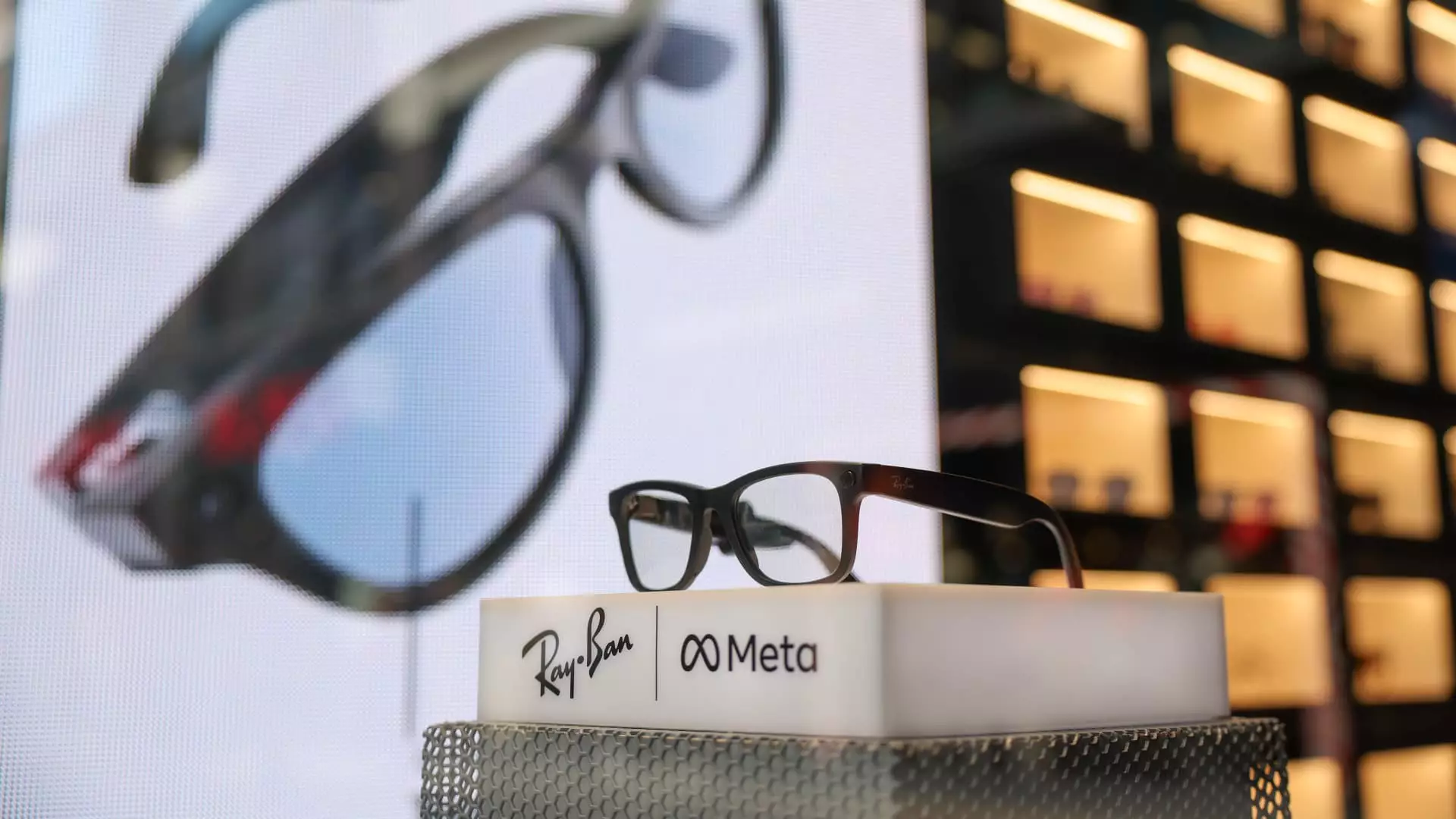The wearable technology market is experiencing a significant transformation with the emergence of smart glasses as a new category of consumer technology. This innovative segment is poised to capture attention amid the fall product launches, as key industry players like Snap and Meta push the limits of augmented reality (AR) experiences. However, despite the growing interest and technological advancements, the path to widespread acceptance remains fraught with challenges and competition.
Smart glasses represent an exciting evolution in the realm of wearable devices, offering users enhanced functionalities that blend the digital and physical worlds. Following Apple’s high-profile Vision Pro announcements, other tech giants are keen to capitalize on this burgeoning trend. Snap’s recent unveiling of augmented reality glasses and Meta’s forthcoming presentation of their Ray-Ban Meta Smart Glasses reflect a competitive landscape fueled by innovation.
According to HSBC research, Meta’s second-generation Ray-Ban smart glasses achieved remarkable sales figures, moving over 1 million units in the first half of the year compared to just 300,000 for the original model. This sharp increase indicates a growing consumer interest in wearable tech that merges style with functionality. The allure of these devices lies not only in their aesthetic appeal but also in their practical applications, such as photography, video recording, and interconnected experiences with social media platforms.
Despite the promising sales figures, smart glasses still grapple with acceptance challenges reminiscent of previous wearable technology, like Google Glass, which was discontinued due to market rejection. One significant barrier to adoption is consumers’ discomfort with wearing devices that may seem intrusive or overly technical. Privacy concerns and societal perceptions often dictate the willingness of the wider public to embrace such innovations.
HSBC analyst Frank He notes that the anticipated emergence of AI assistants could serve as a catalyst, possibly paving the way for broader acceptance of smart glasses. The integration of AI could enhance user experiences significantly; however, for many consumers, the value proposition of smart glasses must be striking enough to supersede their reservations.
To succeed in this competitive arena, manufacturers must invest in robust technological advancements while addressing consumer concerns. A case in point is Sunny Optical, a China-based company recognized for its expertise in optics and camera technology. As cited, Sunny has positioned itself as a pivotal player in the supply chain for smart glasses, benefitting from increased demand linked to products like the Ray-Ban smart glasses.
Analysts predict promising market growth for Sunny Optical, with shipment estimates for smart glasses significantly increasing in the next few years. Nonetheless, the firm faces tough competition from other technology sectors, particularly smartphones and automobiles, which may dilute its potential growth.
While HSBC remains optimistic about Smart Glasses’ trajectory, other market observers, like JPMorgan, express caution. JPMorgan’s analysts predict that while Sunny’s recovery is underway, the growth pace may lag compared to peers in the high-end smartphone arena. The contrasting views reflect the inherent uncertainties in emerging technology markets where trends evolve rapidly, shaped by consumer preferences and competitive pressures.
As consumers navigate their choices, the price point of smart glasses also plays a critical role in their market success. Currently priced around $300, the Ray-Ban Meta smart glasses provide an attractive entry point; however, sustained consumer engagement and product evolution will be crucial for long-term viability.
The future of smart glasses is laden with potential yet riddled with challenges. As established tech companies roll out their innovative products and fresh competitors emerge, the ability to resonate with a broad consumer base will dictate the fate of these wearable devices. Whether they can successfully overcome obstacles related to consumer acceptance and market competition remains to be seen. The stakes are high, and as the technology matures, it will be fascinating to observe how smart glasses integrate into daily life and redefine the boundaries of wearable technology.


Leave a Reply